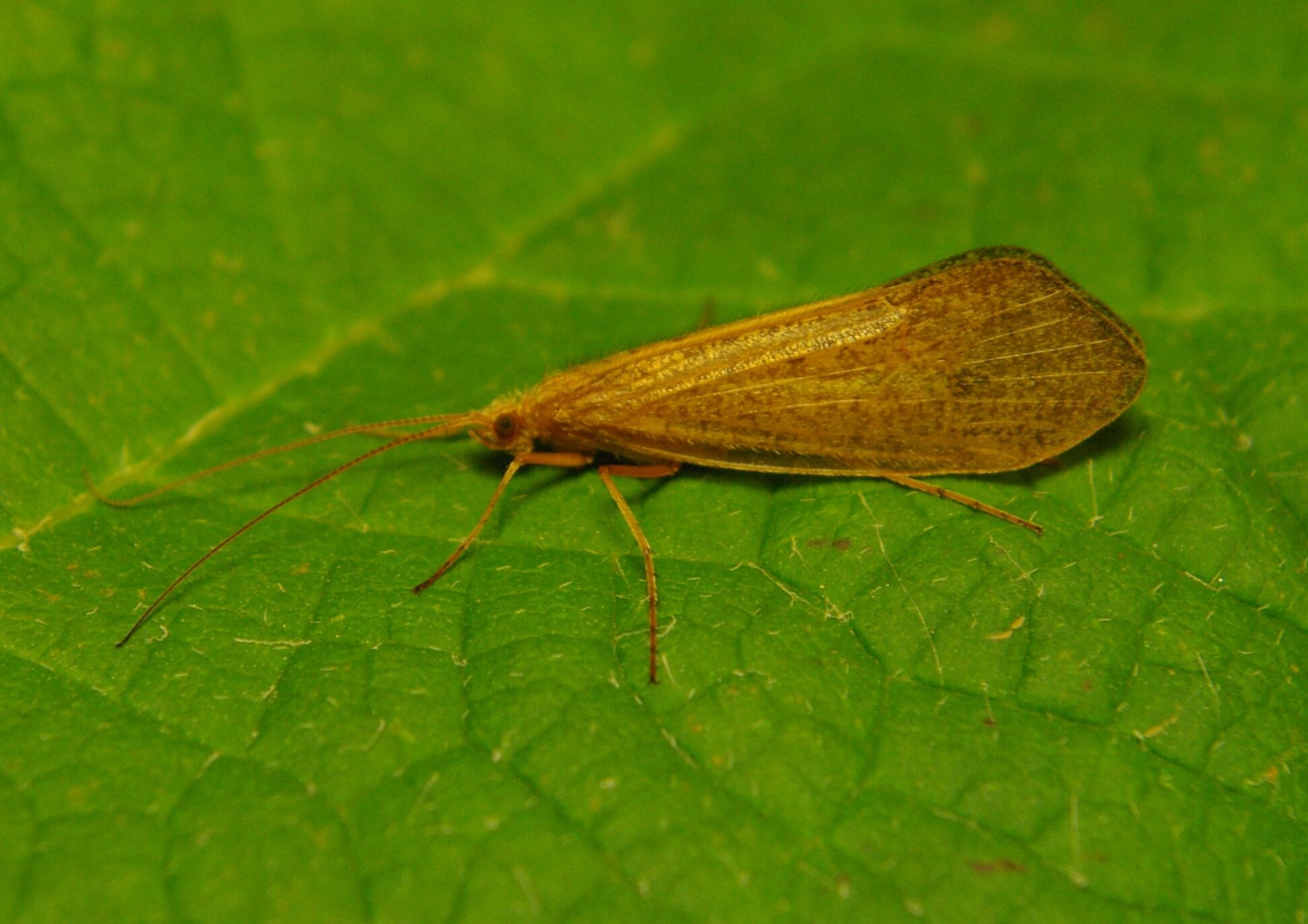November 2025 Macro of the Month- Northern Caddisflies

Northern Caddisflies (Family Limnephilidae)
Last month, we explored the importance of October foliage after it falls into a stream. Let’s take that further! As leaves fall into cold November water, there’s construction underway beneath the surface. Among the cobbles and leaf packs, case-building caddisfly larvae – members of the family Limnephilidae – are busy securing their winter homes. Using silk and whatever materials they can find, like sand grains, twigs, and bits of leaves, they craft portable shelters that serve as both camouflage and armor. To trout, these small architects are important food, and their presence signals healthy, complex habitat.
Nature’s Stream Engineers
Caddisflies belong to the order Trichoptera, close relatives of moths and butterflies. The Limnephilids are sometimes called “northern caddisflies” because they thrive in cool, clean streams. There are at least 18 species found across the state, however, they do not tend to be found in high abundances. Limnephilids play an important role in coldwater ecosystems, shredding leaves, recycling nutrients, and stabilizing fine sediments as they crawl and build.
Their cases tell us a lot about the stream they live in. In higher-gradient riffles, larvae often use tiny gravel or sand grains, creating compact, armored tubes that resist strong currents. In slower glides or spring seeps, cases may be built from sticks, pine needles, or leaf fragments, lightweight and camouflaged among detritus.
Come November, many Limnephilid species are in their final larval stages. They’ll overwinter in these portable shelters before pupating and emerging as adults in spring. If you flip a few streamside rocks this month, you’ll find them clinging tight – little cylinders about a half-inch long, sometimes covered in a patchwork of pebbles, sometimes looking like miniature bundles of sticks.
Indicators of Stream Health
Like mayflies and stoneflies, caddisflies are sensitive to pollution and habitat degradation. Limnephilids in particular prefer cold, well-oxygenated water with intact riparian cover. Their abundance is often a sign that a stream has stable banks, good substrates, and clean groundwater inputs. When a stream has been straightened, silted, or stripped of riparian vegetation, these insects may decline quickly. But in restored reaches where riffle–pool structure and floodplain connection are re-established, caddis populations are typically very healthy.
Fishing with the Caddis
While November doesn’t bring major caddis hatches, trout still key in on larvae dislodged by the current or by your wading boots. Case-builders aren’t fast swimmers, so when they tumble downstream, they’re easy prey. Nymphing with a caddis imitation along the bottom can be surprisingly effective late in the season. Look for slower edges, tailouts, and spring-fed side channels where these larvae concentrate. Choose patterns with a bit of contrast (dark olive, brown, or tan) and add subtle weight to keep the fly ticking just above the substrate. (Note: November trout fishing is limited to catch and release in the following streams: East Beaver Creek in Beaver Creek Valley State Park; Forestville Creek in Forestville/Mystery Cave State Park; Canfield Creek in Forestville/Mystery Cave State Park; South Branch Root River in Forestville/Mystery Cave State Park; Trout Run Creek in Whitewater State Park and Middle Branch Whitewater River in Whitewater State Park. Also, streams within the city boundaries of Chatfield, Lanesboro, Preston, Rushford, and Spring Valley.)
One reliable pattern for imitating Limnephilid larvae is the “Peeking Caddis”. The design mimics a larva partially emerging from its case, with a dubbed or woven body and a bright “peeking” head of chartreuse or cream. Drift it deep under an indicator or tight-line style through likely feeding lanes. For a natural presentation, use a slower drift and let it tumble freely near the bottom, just like the real thing.
In early spring, as these caddis pupate and prepare to hatch, try switching to emergent pupa patterns or small soft hackles with subtle green or tan bodies. But for now, in cold November water, the larval form is your ticket.
Restoration and the Return of the Builders
Every time a MNTU habitat project stabilizes eroding banks, reconnects floodplains, or reintroduces large wood, we are improving habitat for caddisflies as much as for trout. These insects depend on the stability and structure that healthy channels provide. Projects that restore a mix of gravel, cobble, and woody debris not only create better holding water for fish, they also create the micro-habitats where insects like Limnephilids thrive.
